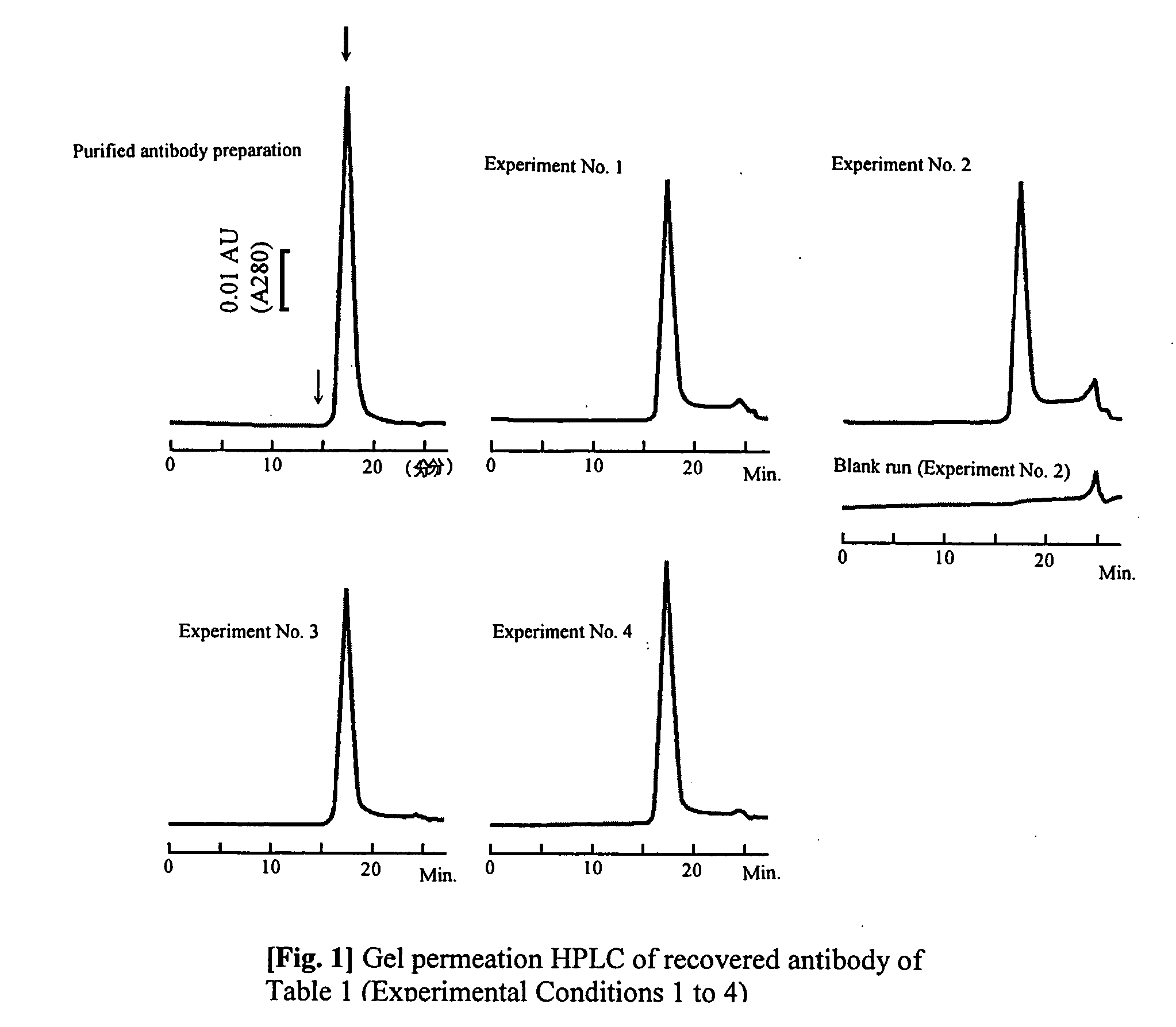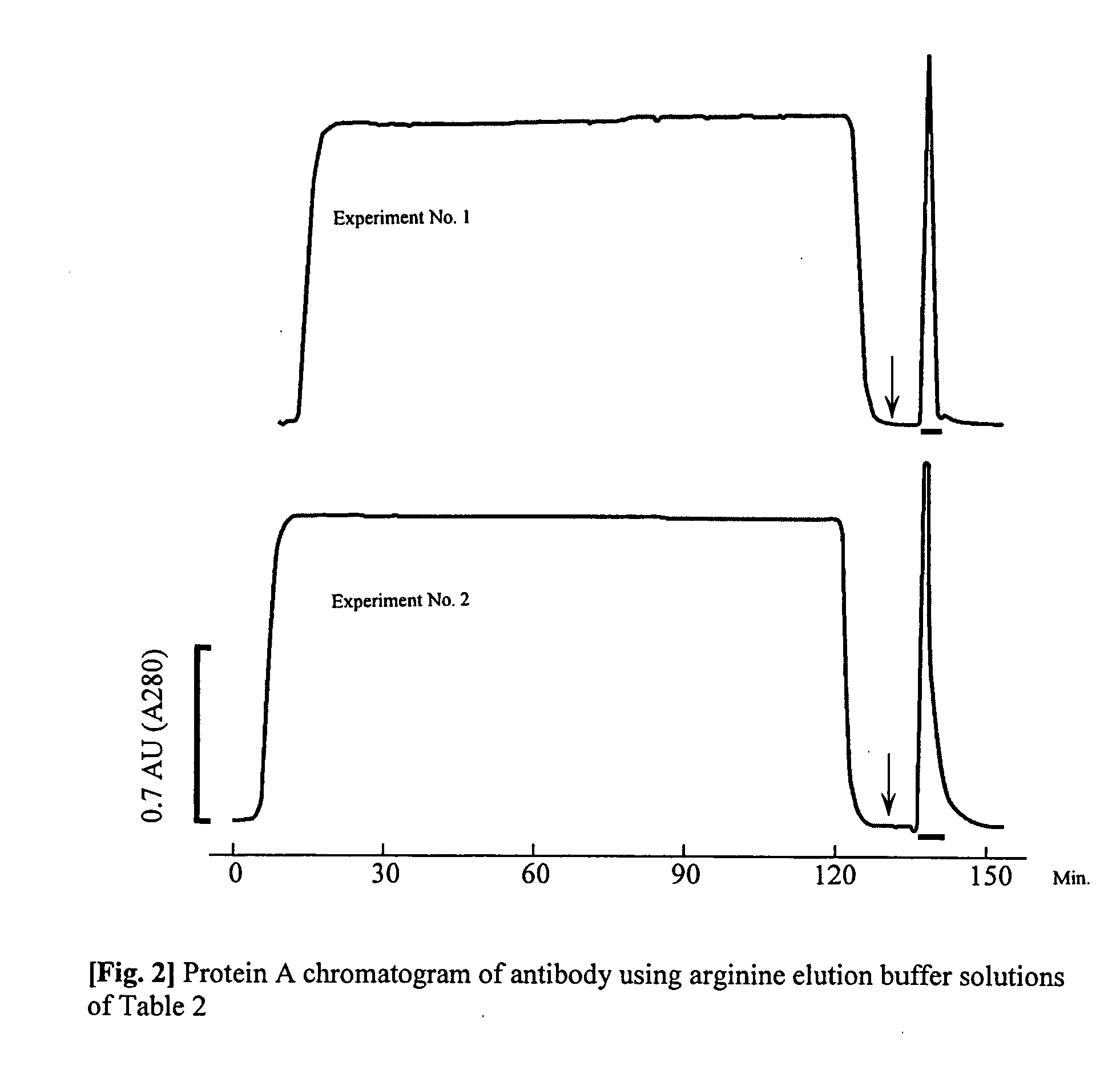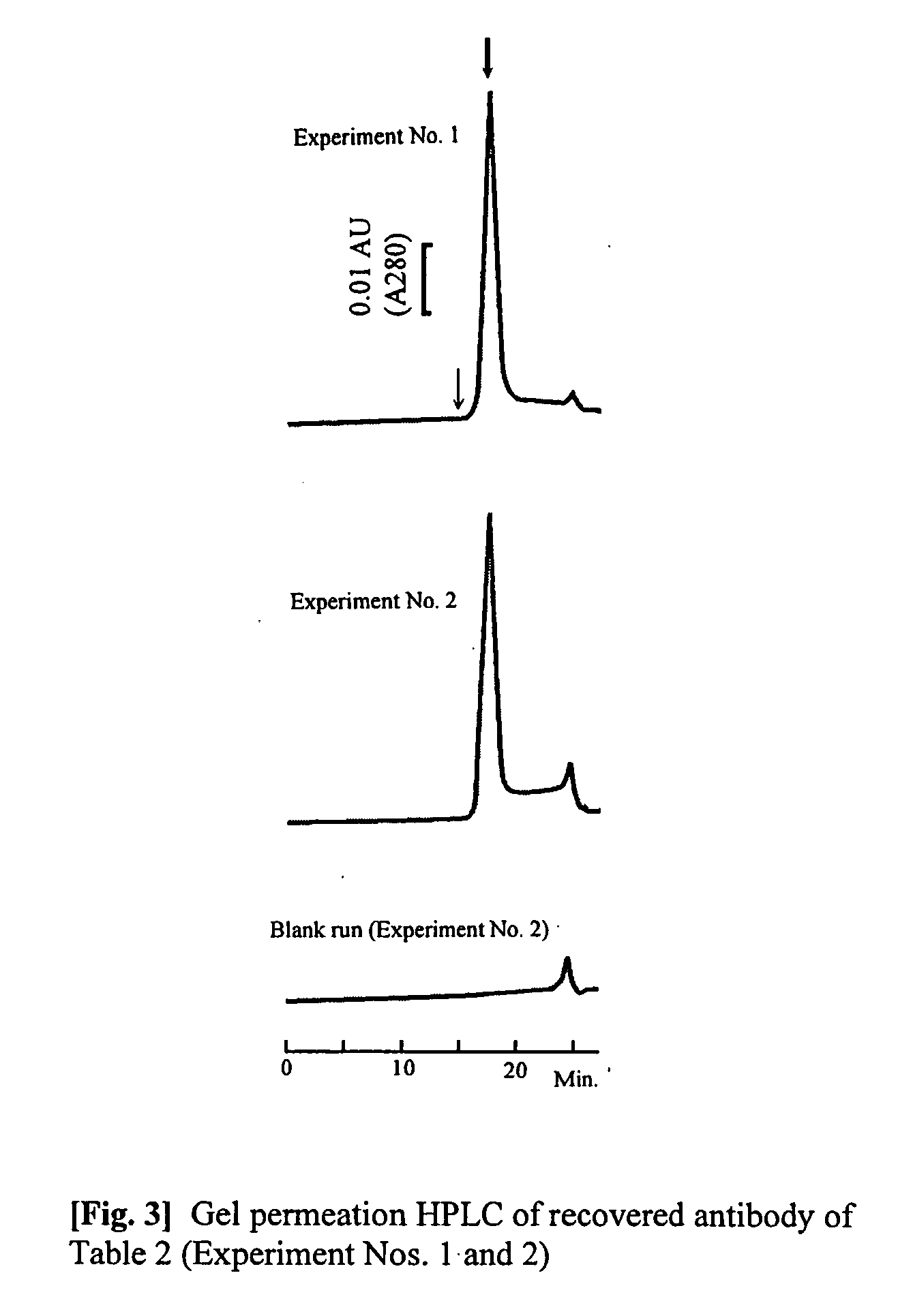Purification method which prevents denaturation of an antibody
a technology of antibody denaturation and purification method, which is applied in the direction of immunoglobulins against animals/humans, peptides, combustible gas purification/modification, etc., can solve the problems of limiting antibody production, extremely undesirable acidic ph exposure, and common problems encountered
- Summary
- Abstract
- Description
- Claims
- Application Information
AI Technical Summary
Benefits of technology
Problems solved by technology
Method used
Image
Examples
example 1
[0046] A (3 mg) quantity of purified anti-vonWillebrand Factor monoclonal antibody (mouse antibody, subclass IgG1; WO96 / 17078) is dissolved in isotonic sodium phosphate buffer solution to 5.28 mg / mL. 6.43 mL of 20 mM glycine / NaOH buffer solution (pH 8.9) containing 3 M NaCl was added to 0.57 mL of the antibody solution, to a total of 7 mL. This solution was loaded at a rate of 0.5 mL / min onto a 1 mL size HiTrap r-Protein AFF column (Amersham Biosciences, Inc.) that had been equilibrated with the same buffer solution, washed with 5 mL of the same buffer solution, and reequilibrated. The column was then loaded with 0.5 mL / min of the elution buffer solution shown in Table 1, and the desorbing and eluting antibody was recovered using ultraviolet absorption at a wavelength of 280 nm. The ultraviolet absorption of the obtained antibody solution was measured, the concentration of protein was calculated, whereby the degree of extinction coefficient exhibited by 1 mg / mL of the antibody solut...
example 2
[0052] Cells derived from mouse myeloma were cultivated for one week in serum medium yielding 60 mL of culture supernatant, including impurities. This was loaded at 0.5 ml / min onto a HiTrap r-Protein AFF 1 mL column (Amersham Biosciences, Inc.) that had been equilibrated with isotonic phosphate buffer solution, yielding 60 mL of pass-through fraction. This fraction was handled as a model culture supernatant not containing any antibody produced by cells. 10.5 g of NaCl was added to 60 mL of the model culture supernatant and the mixture was lightly stirred and dissolved at 5° C. Next, the mixture was left standing for 30 min at 5° C. When the bubbles were found to have disappeared, 3 mg (3.28 mg / mL, 0.57 mL) of the same purified mouse monoclonal antibody as employed in Example 1 was added, and 1.2 mL of 1 M TrisHCl of pH 8.7 was added. The mixture was slowly stirred, after which the pH was adjusted to pH 8.9 with 0.5 M NaOH. The mixture was then loaded at 0.5 mL / min onto a HiTrap r-Pr...
example 3
[0055] Recombinant CHO cells (U.S. Pat. No. 5,854,070; ATCC Number CRL-11398) producing humanized antibody 6E6 to human CD 18 (integrin P2 subunit) were cultured for four days at 37° C. with a roller bottle in culture (αMEM) to which 10 percent fetal bovine serum (Invitrogen FBS, ultra-low IgG type) had been added, yielding a high cell density. Subsequently, the culture was transferred to fresh culture medium (ASF104, Ajinomoto) to which 2 percent fetal bovine serum (Invitrogen FBS, ultra-low IgG type) had been added, and culturing was continued for three days at 37° C., yielding culture supernatant containing antibody. 1 M Tris HCl of pH 8.5 to adjust the pH to 7.5 was added to 32 mL of this culture supernatant, after which the mixture was loaded at 0.4 mL / min onto an r-Protein AFF column (0.5 cm in diameter, 1 cm in length, 0.2 mL in size: Amersham Biosciences, Inc.) that had been equilibrated with isotonic phosphate buffer solution. The column was washed with the same buffer solu...
PUM
| Property | Measurement | Unit |
|---|---|---|
| pH | aaaaa | aaaaa |
| pH | aaaaa | aaaaa |
| pH | aaaaa | aaaaa |
Abstract
Description
Claims
Application Information
 Login to View More
Login to View More - R&D
- Intellectual Property
- Life Sciences
- Materials
- Tech Scout
- Unparalleled Data Quality
- Higher Quality Content
- 60% Fewer Hallucinations
Browse by: Latest US Patents, China's latest patents, Technical Efficacy Thesaurus, Application Domain, Technology Topic, Popular Technical Reports.
© 2025 PatSnap. All rights reserved.Legal|Privacy policy|Modern Slavery Act Transparency Statement|Sitemap|About US| Contact US: help@patsnap.com



